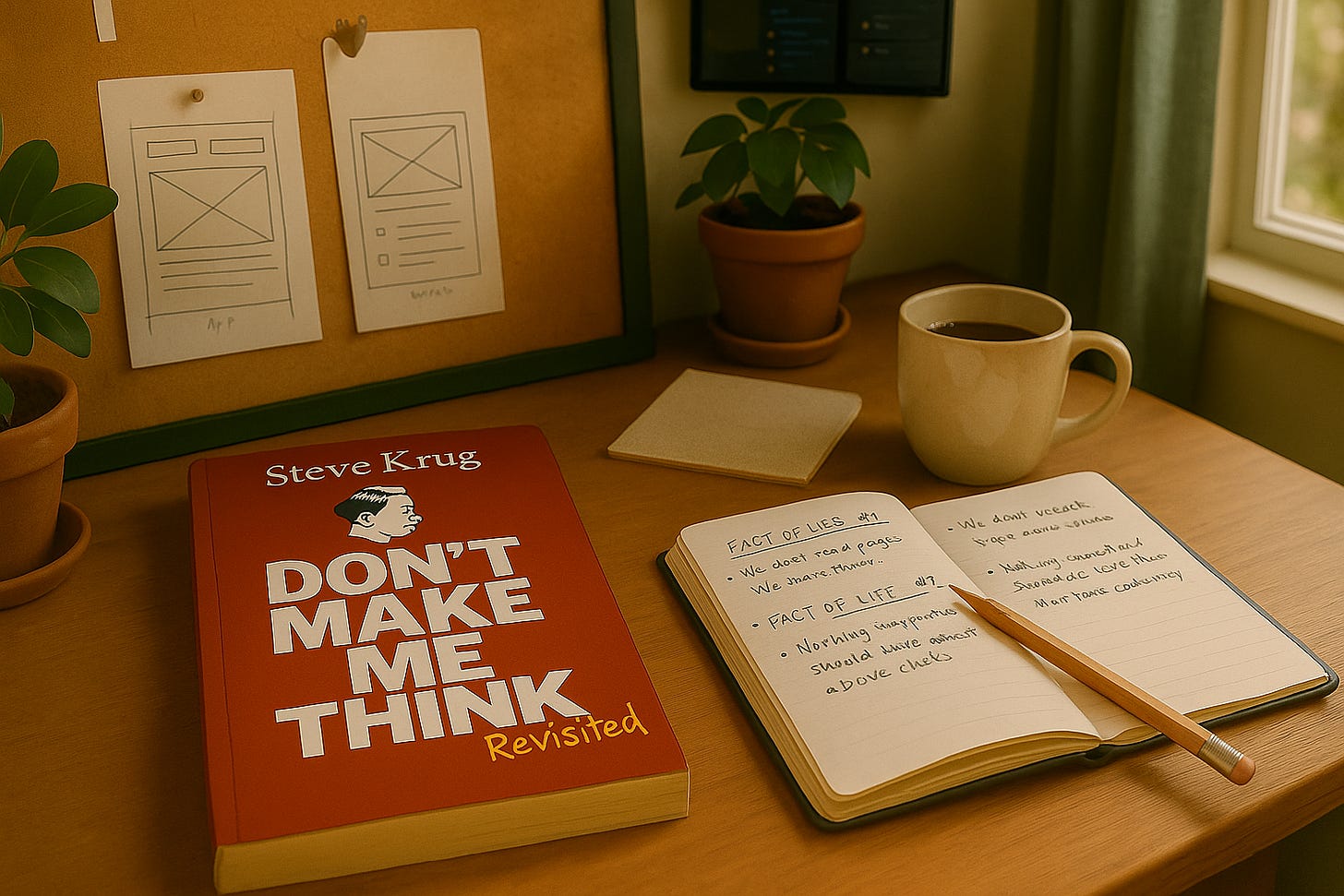Book Review: Don’t Make Me Think — Still Worth the Read in 2025
Having access to knowledge and knowing your field are two very different things.
That thought kept bouncing around in my head as I read (or, rather, re-read) Steve Krug’s Don’t Make Me Think for our UX team’s book club. Sure, I could’ve skimmed a summary, watched a few YouTube takes, or even asked ChatGPT to explain it. But none of that would’ve made me think as deeply, or as practically, as cracking open the book itself.
Why Revisit an "Old" UX Book?
Because the stuff that matters hasn’t changed. People still muddle through interfaces. They still don’t read: they scan. They still click the first thing that looks promising and hope for the best. And as Krug puts it, they still hate thinking when they’re just trying to use your site.
In a time when every designer is being pitched 17 new AI tools a week, it’s grounding to return to core principles:
Clarity beats cleverness: Make it obvious, or at least self-explanatory.
Conventions exist for a reason: Don’t reinvent scrollbars unless you have a good reason.
Three easy clicks > one confusing one: Friction isn’t about effort; it’s about uncertainty.
Takeaways That Hit Home
You are not the user - A timeless reminder that gets buried under stakeholder opinions and Slack debates. Your intuition is not universal.
Everyone has opinions, but data wins - Chapter 8 ("The Farmer and the Cowman Should Be Friends") made me laugh. It's painfully true how passionate we all get about dropdowns and font weights. Testing is still the cure for all design debates.
Usability testing doesn’t need a lab - Krug’s take on “do-it-yourself” testing is liberating. One user is better than none. Three users every two weeks? Totally doable.
So, Is It Outdated?
Yes, in parts. The screenshots are old. The mobile sections don’t reflect today's app-first world. But here’s the thing: the principles are timeless. People change slowly, even when technology evolves at the speed of thought.
Krug’s tone is warm and funny, and the book doesn’t waste your time—just like a good interface shouldn’t. That makes it a worthy companion to any AI-powered future we’re building.
Final Thought
If you're a UX designer, or becoming one, don’t skip this classic book just because you can summarize it with a prompt. Reading this book won’t just give you knowledge. It’ll shape your instincts.
And in a field where tools come and go, instincts are the only thing that age well.


